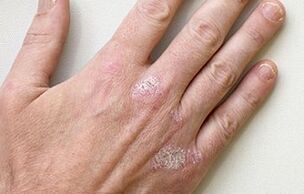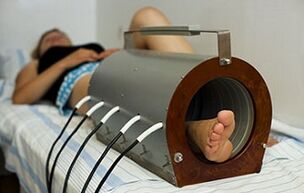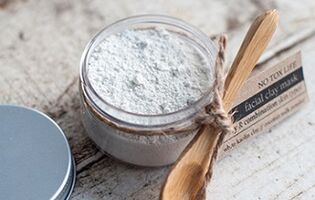Psoriasis is a chronic skin disease. It manifests in the form of a rash. The initial stage is characterized by symptoms similar to the clinical picture of other diseases of the epidermis. To prevent the progression of the disease, to facilitate its course, it is necessary to differentiate the pathology. To do this, you need to know the symptoms and manifestations of psoriasis at different stages.
Causes in adults and children
Why psoriasis occurs in children and adults, medical scientists have yet to find out exactly. There is only speculation about the cause of the development of the disease. Therefore, there is an assumption that psoriasis can be hereditary: in people whose parents suffer from such skin diseases, psoriasis rash is often observed. Some doctors associate the development of the pathology with immunological instability, metabolic disorders and the presence of chronic infections. In most patients, the doctor noted that the hyperlipidemia was severe.
In order to check for such predisposition to disease, it is necessary to perform a classical analysis of the genome. People with 10 chromosome loci are more likely to develop psoriasis. The main genome responsible for congenital predisposition is PSORS1.
Psoriasis can develop at any age: in children, young men and women, the elderly. In adults, according to medical scientists, the following factors cause the disease:
- low immunity;
- chronic fatigue;
- alcohol abuse;
- serious stress;
- poor hygiene;
- is constantly overeating;
- insect bites;
- infectious pathology (influenza, ARVI); vaccination
- ;
- temperature difference;
- vitamin deficiency; smoking
- ;
- long term drug;
- write;
- allergies;
- hormonal imbalance;
- climate change;
- inappropriate nutrition.
Children most often face psoriatic eruptions:
- after a sore throat;
- if the body has a chronic infection;
- with low immunity.
Psoriasis should not be initiated:those with this diagnosis increase the risk of early atherosclerotic vascular damage and the development of heart disease. There is also a threat of arthritis.
Most psoriasis occurs in people with poor genetics.
How Psoriasis Works

Psoriasis is characterized by the appearance of large patches on the skin. Nodules are initially insignificant and appear on parts of the body where the skin is coarser (on the elbows, knees). Such formation comes off. When scratching, sores will appear, pale in color again and again.
The disease is characterized by the following manifestations:
- Stearin stain.These are small scaly papules that combine to form arrays.
- Movie end.Under psoriatic patches there is a thin, light pink skin layer. Her doctor can see after removing all the scales.
- Root bleeding(blood mist syndrome). If the end membrane is damaged by scraping the horny layer of the epidermis, drops of blood will appear.
Such manifestations in a population are called the psoriatic triad. They were discovered during the sampling of the inflamed skin.
Psoriasis also has the following symptoms:
- forms new papules in case the skin is damaged and the area of damage increases; The
- elements of the rash are dense in structure;
- has a red rim around plaque;
- weaknesses;
- presence of a white 3 mm atrophic pseudo-rim around the rash;
- has a bad odor from the skin (when pustules form);
- oil formation in which a yellow brown spot appears under the fingernail;
- proliferative dermatitis, in which the skin thickens, the process between capillaries prolongs;
- thimble symptoms (nail psoriasis);
- scabies.
Since psoriasis is a chronic medical condition, its symptoms begin to disappear after a while and the wound heals. But then the papules form again.
First symptoms of disease onset
The first stage of psoriasis is always a rash.
At first it was almost imperceptible, with no characteristic scales. Some rash appears on the extremities.

After a few weeks, the number of affected areas increased. The erythematous nodules are linked in large plaques, covered with a silver scale. Itching in the early stages of psoriasis is moderate. Chronic fatigue and weakness.
Such symptoms are also characteristic of an allergic skin reaction, dermatitis and shingles. Therefore, it is important to perform a differential diagnosis.
On examination, the doctor discovered trio of psoriasis. By the size of the rash, the doctor determines the cause of psoriasis: a drop of water, a dot or a coin.
Signs of advanced stage of disease
As the disease progresses, the number of papules increases, the rash spreads to healthy areas of the body. The slightest scratch, impact, or burn will also cause a nodular rash. The second stage takes a long time. On the touch, you can find dense boundaries between the inflamed areas of the epidermis. Bordered plaques are prominent in light colors and are covered with scales.
In the late stages of the disease, symptoms begin to disappear gradually. The plaques become lighter, their outlines fade. After a while, the papules disappear, the area is still dry skin, hyperpigmentation spots.
The temperature in psoriasis can only increase with an inflammatory process, which reduces acne. After that, the affected areas can be damaged.
What is water vapor streaking
Stearin spots are the main symptom of the formation of the trio of psoriasis. It is a small area with papules of the rash, which are easy to flake off. The more the doctor shaves the damaged, flaky skin. During the operation, the operator does not experience pain. This is so called because detachable scabs resemble stearin spots.
First place of appearance: rash localization
At first, psoriasis episodes form on the elbows, feet and knees. The papules then spread to thin and thin areas of the body: in the lower back, wrists, abdomen, groin area, and scalp. The rash can be localized elsewhere. But these areas of the body are most commonly affected by psoriasis.
In the absence of proper treatment, the disease will spread to the nails, mucosa, joints.
Localization of psoriatic rash in an adult can be:
- Head
- . The rash is observed on the scalp, above the ears, behind the head, in the area of the eyebrows, eyelids, eyes, and nasal folds.
- Lower limb.
- Elbow. Scaly plaques form and become rough over time.
- Read on. Appears a small rash similar to urticaria.
In children, a rash usually appears on:
- pins;
- buttocks;
- skin folds; elbow
- ;
- scalp.
How a scaly scalp on the head begins
Scaly lichen can spread throughout the body. Usually it is acute. The rash forms from a seed to a pea. The papule is covered with a white and silver scale. Nodules increase in size over time, merging into a focus with uneven edges. This panel has a clear border. When psoriasis affects the scalp, a psoriasis peak forms: red pus-filled bumps appear behind the ears and along the forehead line.
How fast disease develops
How quickly a psoriasis develops depends on its form. Therefore, this type of tear-shaped pathology is distinguished by the possibility of sudden appearance and disappearance. Severe plaque psoriasis is characterized by a gradual spread of pustules throughout the body. The rash then becomes covered with scabs that flake off briefly. The nodules are linked together, forming large plaques.
Diagnostic method

If psoriasis is suspected, see a dermatologist. The doctor makes a hypothetical diagnosis on the basis of the patient's complaint and examination. The doctor gives a referral to undergo laboratory or instrument research. Differential diagnoses are also performed.
If the disease progresses, blood should be donated for analysis to determine an acute, autoimmune or rheumatic course. In severe situations, biopsy is also performed, showing an accumulation of Rete bodies, thickening, penetrating the skin by multicellular leukocytes, T lymphocytes, dendritic cells, proliferationvessels under psoriatic plaques.
To make a differential diagnosis do:
- Allergy test
- ;
- serum biochemistry assay;
- analyzes the faeces for dysbiosis;
- histological examination of biopsy.
No special tests are needed to diagnose psoriasis in children. Pathology is detected on the basis of examination of the factors of the rash.
How to treat psoriasis
Since psoriasis is considered a chronic condition, it cannot be completely cured. The goal of therapy is to achieve steady remission and eliminate complications. To do this, use drugs, physiotherapy, folk methods. In severe cases, the patient must be hospitalized. In the early stages, therapy is allowed to be carried out at home.
Clinical therapy
For the treatment of psoriatic lesions, doctors prescribe antihistamines to reduce swelling, itching, and redness.

Enzyme is also used. They stimulate the body to produce the necessary enzymes. Damaged skin causes discomfort and tension.
Realizing that an incurable illness causes psychological problems. Therefore, the doctor prescribes a sedative to help restore the emotional state.
Liver protection drugs are used to improve liver function. The inflammation and itching can be alleviated with nonsteroidal anti-inflammatory drugs. For strengthening the body, immunomodulatory drugs are prescribed.
Physiotherapy techniques are also used. They help to remove pigmentation and speed healing. Doctors recommend:
- selective herbal medicine; effects of the
- laser on the skin;
- ultrasound treatment; Magnetic therapy
- .
In the hospital, the patient is under constant supervision by the doctors. Therefore, the effectiveness of the prescribed treatment regimen can be easily monitored, to make timely adjustments to the applied therapy.
Home treatment
After discharge, treatment will continue. To maintain normal health and steady remission, the doctor prescribes several drugs in one course. Vitamin complexes, ointments, folk remedies are used.
It is recommended that the patient treat areas of psoriasis skin daily with hormonal and non-hormonal ointments.
To improve the condition of the epidermis, a dermatologist prescribes vitamins. Vitamins A, E, D and C are especially helpful in the fight against psoriasis, enhancing the body's defenses, helping to restore and purify the skin.

Traditional healers recommend using activated carbon. One of the main causes of psoriasis to develop is metabolic disorders, intoxication. Activated carbon acts as a sorbent, thereby cleaning the body from harmful substances. It should be consumed for a month, twice a day, at a dosage of 1 tablet per kilogram of body weight.
White clay restores the skin. It relieves inflammation, dries up, removes itching. Sea salt baths are also very helpful.
When treating psoriasis at home, there are a few rules to follow:
- Take medication prescribed by your doctor at the recommended dosage.
- Treat the skin with ointments and creams.
- Carefully remove the crust after softening.
- Sauna and sunbathing.
- Avoid stressful situations.
- Adhere to the daily diet.
- Get enough rest.
- Take a break while taking the medicine.
By following these recommendations, one can avoid a relapse.
As such, psoriasis is a serious chronic disease. The reasons for its development have yet to be precisely determined, only the provoking factors are known. The disease has characteristic symptoms but at an early stage like other skin diseases. To identify and initiate treatment of the disease promptly, you need to contact a dermatologist when a suspicious rash appears.

























